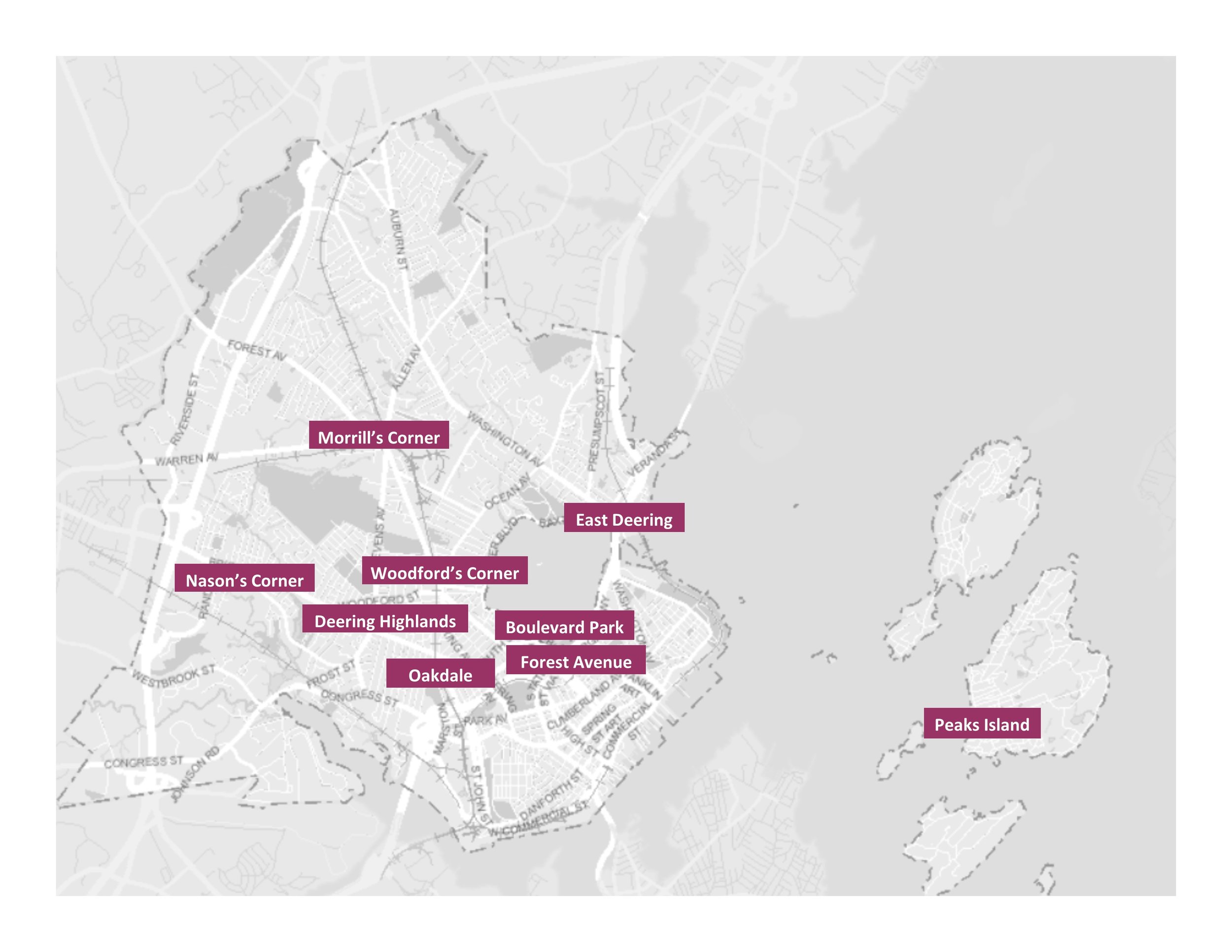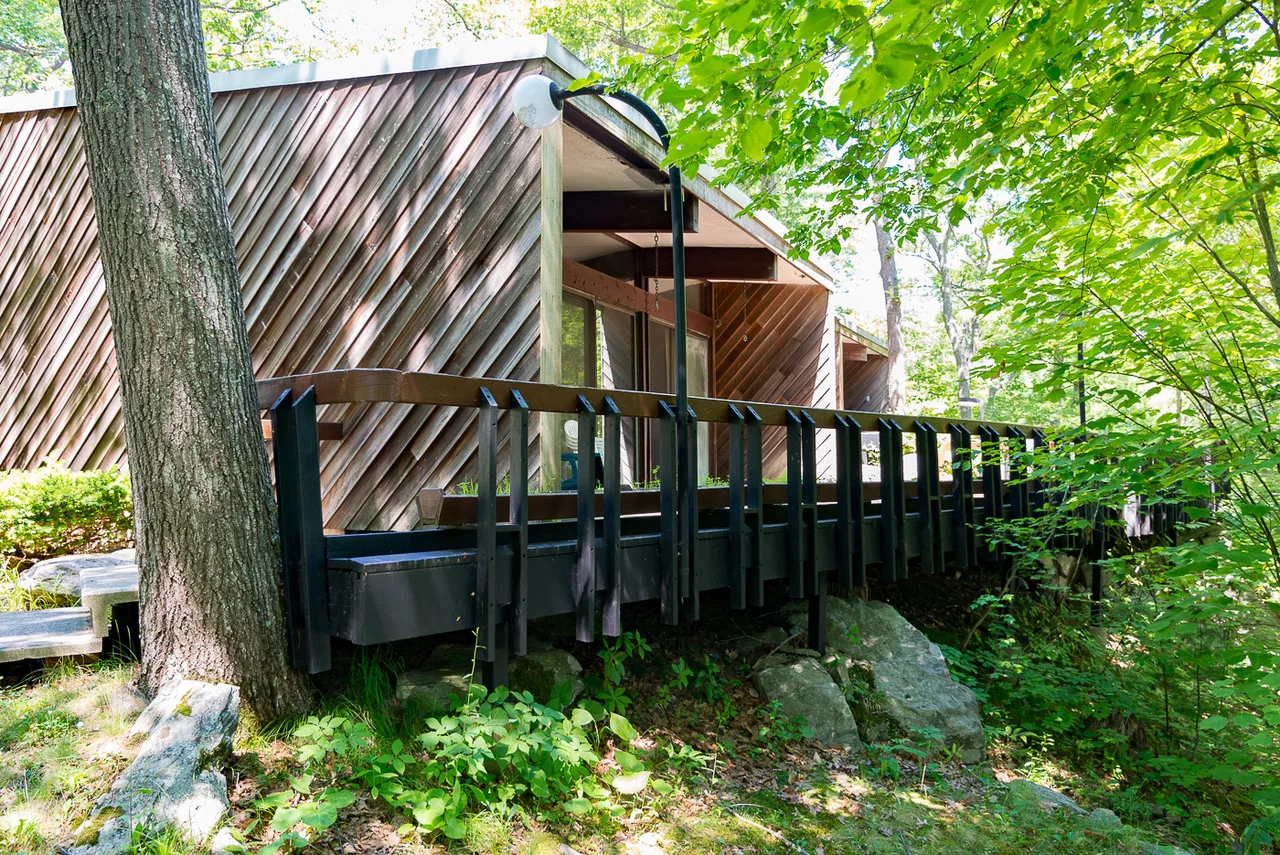With the 2019 Old House Trade Show rapidly approaching, we’re taking a moment to chat with a few REALTORS® participating in the show to get their perspectives on working with historic homes—and to learn about what buyers and homeowners might expect in the process of buying, selling, or renovating an older home. Read our conversation with Tom Landry below, of Benchmark Real Estate and CornerStone Building & Restoration. Both Benchmark and CornerStone are Preservation Sponsors at Landmarks, and the Benchmark team will be joining us as a Corner Sponsor for this year’s show.
The Founding Women of Portland's Preservation Movement
By Daphne Howland
Women have been a critical force not only in saving key buildings but also in changing the city’s approach to its historic fabric.
The American historic preservation movement owes much to women’s volunteer efforts, and the Portland area is no different. The effort often recognized as the first major preservation movement was Ann Pamela Cunningham’s campaign to save George Washington’s Virginia farm, Mount Vernon.
Today we accept the importance of keeping George Washington’s home as a national treasure, but that wasn’t true in the 19th century when the farm’s future was in doubt. Cunningham formed the Mount Vernon’s Ladies Association, which includes a regent and vice regent from each state and oversees the farm to this day, after receiving a note from her mother in 1853 that read, “If the men of America have seen fit to allow the home of its most respected hero to go to ruin, why can't the women of America band together to save it?”
“Of course, what we need to remember about women in preservation is that women have been crucial to the movement since the beginning in this country,” says Earle Shettleworth. “In Portland, there’s a long tradition of women playing pivotal roles in the preservation of our past. Probably the first person we would cite would be Ann Longfellow Pierce.”
Edith Sills, right, Bowdoin College Archives image no. 4317
The Trade Show Files: A Realtor's Perspective with Erin of Gardner Real Estate Group
With the 2019 Old House Trade Show just weeks away, we sat down with REALTORS participating in the show to get their perspectives on working with historic homes—and to learn about what buyers and homeowners might expect in the process of buying or selling an older home. Read our conversation with Erin Oldham below, who represents Gardner Real Estate Group, a long time supporter of Landmarks and sponsor of this year’s Trade Show.
Landmarks: How is the sales process different when working with an older home?
Erin: From the listing side, there is a bit more preparation including researching the provenance and story of the home. When I walk through a home for the first time, I am very focused on documenting the unique features of the home as well as the upgrades in the kitchen/bathroom and all of the systems. Showings work a bit differently as well: I present the story of the home to the buyers and point out the special features. It is worth having buyers understand that beyond just purchasing a home, they could become part of the story of the home. I believe knowing the story enhances the value of the home and also introduces the buyer into the world where stewardship of a home matters and contributes to long-term value.
The Trade Show Files: Ask the Experts
So you have an old house - now what?
A while back Greater Portland Landmarks invited five old house experts (Marc Bagala, Les Fossel, Julie Larry, Arron Sturgis, and Peter Taggart - bios after the conversation) to comment on how to prioritize your plan for any major work on your older or historic home. We asked them how to incorporate plans for sustainability and energy efficiency, how to stay on budget, how to prepare, and more. Here’s how they answered.
Peter Taggart, Marc Bagala, Les Fossel, and Julie Larry, will all be at the 2019 Old House Trade Show, March 30-31, where you can ask these experts more questions about your house. Get Tickets.
What is the first thing to consider?
Julie Larry: The first thing is to determine what are the important features of the house that should be maintained as part of the project, so that a home doesn’t lose its special character.
Peter Taggart: Research, to understand the history of the structure, the materials used, and the condition they’re in.
Arron Sturgis: A complete assessment of the home is the best way to increase appreciation and understanding of it. It provides the basis for knowing the condition, the materials within it, how it was built, and what changes were made over time.
Les Fossel: Ask yourself: do you have the resources (time, money, skills, energy and commitment) to take the project to completion? Don’t trust yourself on this, ask for experienced advice.
Marc Bagala: I want to be sensitive to the owners, their love for their home, and what they’re looking for. I try to design my work around that and their budget. My interview process is to ask a lot of questions.
How do you balance historic preservation with sustainability and energy efficiency?
The Green Book and Portland
Did you know that Portland was included in this well-known guide book for African Americans travelling in the mid-twentieth century?
The guide book was originated and published by New York City mailman Victor Hugo Green from 1936 to 1966, during the era of Jim Crow laws, when open and often legally prescribed discrimination against non-whites was widespread. Although pervasive racial discrimination and poverty limited car ownership, the emerging African-American middle class bought automobiles as soon as they could afford to do so, but when travelling faced a variety of dangers and inconveniences along the road, from refusal of food and lodging to arbitrary arrest. In response, Green wrote his guide to services and places relatively friendly to African-Americans, eventually expanding its coverage from the New York area to much of the United States. He also founding a travel agency.
The Green Book and Portland
Did you know that Portland was included in this well-known guide book for African Americans travelling in the mid-twentieth century?
The guide book was originated and published by New York City mailman Victor Hugo Green from 1936 to 1966, during the era of Jim Crow laws, when open and often legally prescribed discrimination against non-whites was widespread. Although pervasive racial discrimination and poverty limited car ownership, the emerging African-American middle class bought automobiles as soon as they could afford to do so, but when travelling faced a variety of dangers and inconveniences along the road, from refusal of food and lodging to arbitrary arrest. In response, Green wrote his guide to services and places relatively friendly to African-Americans, eventually expanding its coverage from the New York area to much of the United States. He also founding a travel agency.
The Trade Show Files: Stephanie Brown of Bagala Window Works
One of the best parts of the Old House Trade Show is having the opportunity to chat with exhibitors about their memorable experiences with older homes. It’s also a great opportunity to discuss options for your home projects and find inspiration in the creative solutions offered by all of our exhibitors.
To start the conversation, we caught up with Stephanie Brown, a window technician at Bagala Window Works. An exhibitor at the upcoming 2019 Old House Trade Show, Bagala Window Works (BWW) is a local company and long-time supporter of Greater Portland Landmarks working to preserve the unique heritage of homes through time-tested techniques in window restoration. Stephanie discusses her work with older homes, her favorite window projects, and her perspective as a woman in a skilled trade profession traditionally held by men.
Heating Things Up with Attic Insulation
If your historic New England home is cold in the winter or expensive to heat, you’re not alone.
Attic insulation is one of the most cost effective energy-saving measures for New England homes, yet many in the greater Portland area have inadequate amounts of attic insulation compared to the recommended levels for our climate.
While insulating an attic in general is a fairly straightforward energy-saving solution that will make it easier to warm or cool your home as the weather demands, it can be a tricky project, especially for older and historic houses.
How does Landmarks determine what buildings and places to advocate for?
At the heart of our mission is understanding this place. Greater Portland. The first step any preservation organization needs to undertake is to document what buildings and places exist, recognize why they were built, and to document for whom they were created. Landmarks has been doing this work since it was formed in 1964. In our research library are files on many properties in Portland, Westbrook, Falmouth, Scarborough, and Cape Elizabeth. Over the years, we’ve worked to document properties in these communities through historic resource surveys, field visits, and community histories. That work continued in the 1990s with surveys in West Bayside, India Street, and on Munjoy Hill in Portland. More recently we’ve been documenting neighborhoods off peninsula, on Peaks Island, and in South Portland. In 2019 our survey work will document properties in Portland’s East Bayside and South Portland’s Ferry Village. If you’d like to learn more about some of the neighborhoods we’ve been documenting check out a new page with links to videos and slideshows about the history, architecture, and people that make up some of these neighborhoods we’ve been documenting!
The Trade Show Files: Midcentury Marvel
As we gear up for the 2019 Old House Trade Show in March, we’re sharing projects from people around the state in the process of working on their older home. Below, Laurel LaBauve of SoPo Cottage shares her experience with her “Midcentury Marvel” in Cape Elizabeth.








